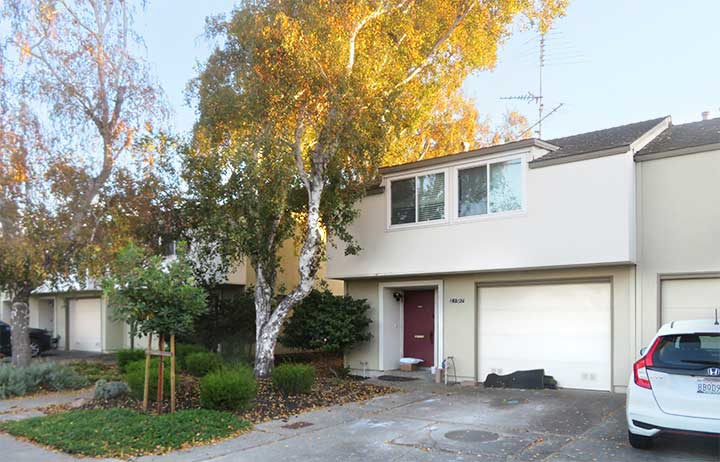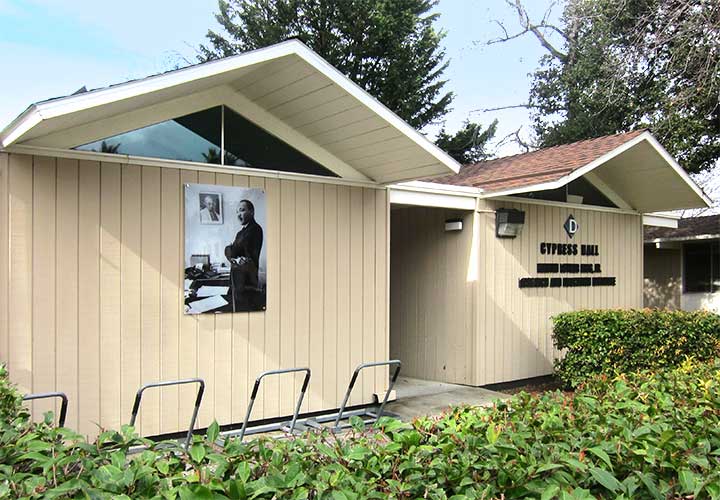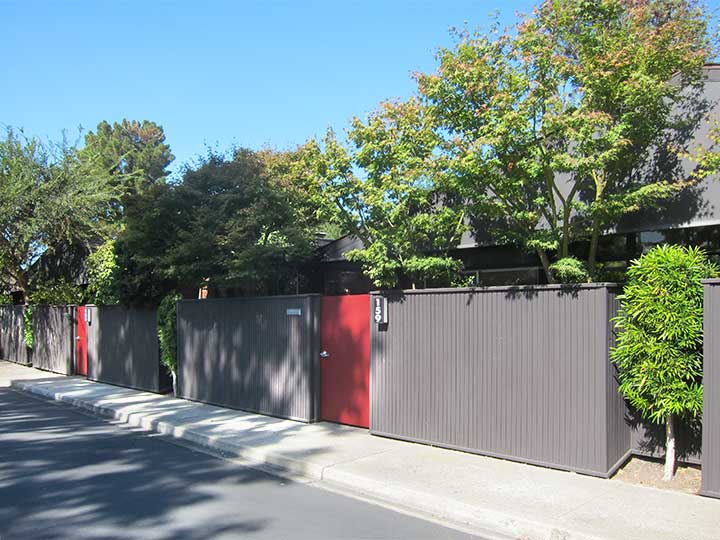
The Eichlers That Never Were
 |
His background may have been in finance, but Joe Eichler was never a strictly bottom line kind of businessman. More than money, what seemed to motivate Joe through his homebuilding career was adventure: trying new things, expanding his scope, providing housing for varied clientele.
During his career, which stretched from the end of the 1940s to his death in 1974, Joe built much more than his signature, single-family suburban tract houses. He built duplexes, urban high-rise and town house residences, a shopping center, an academic building, and offices for his own firm.
But how about projects planned by Eichler that never got constructed? Let’s heed the words of architect Cliff Hanssen, who worked on some of these: “A lot of good things you design never get built.”
In a 2017 interview Hanssen, who worked for about five years for Eichler’s architect, Claude Oakland & Associates, said he helped design some Eichler urban projects that did get built, including the Summit on San Francisco's Russian Hill and Central Towers in the Tenderloin.
 |
Reading through the finding guides for the Claude Oakland and (partner) Kinji Imada archive at UC Berkeley, and the A. Quincy Jones Papers at UCLA, shows how many un-built projects these architects designed for Joe.
Joe often asked both his design teams to devise plans. By this time in his career, Eichler was no longer employing his original architects, Anshen and Allen. Most of the Jones plans were designed with partner Frederick Emmons.
As Joe expanded beyond single-family homes, he sought to build apartments in both low- and high-rise buildings. He did build some. But many remained dreams.
Joe’s never-built multi-family projects included high-rise apartments proposed for San Mateo in 1964, which Joe later recast as what would have been his only senior residence, the San Mateo Retirement Center.
The project, planned for El Camino Real and St. Matthews Avenue, would have been about 17 stories, Hanssen recalled. He said he was the primary designer. “We got the zoning change,” he said, adding, “They were kind of hard, modern buildings. Very, very crisp looking.”
Also in the early 1960s, Jones & Emmons did a feasibility study for a high-rise apartment project in Palo Alto, and for another in San Jose.
 |
Several entries in the Jones archive show his firm working on five- and six-unit apartment buildings for Eichler Homes, their locations not apparent from the finding guide.
Eichler Homes also considered bringing multi-family units to Southern California, with Jones & Emmons preparing a study for “Redondo Beach Apartments” in 1962.
Back in San Francisco, circa 1963, Eichler Homes had Jones & Emmons design a high-rise residence in the Marina, in the Chestnut-Lombard streets area.
A few years later, when Joe was working not as Eichler Homes but as J.L. Eichler Associates, Jones did a feasibility study for apartments in the South Bay city of Campbell.
Joe always had a fondness for Stanford University, where he built homes for professors throughout his career, along with one small academic complex.
In the early 1960s Jones & Emmons designed a plan for “Supervised Student Housing” on the campus. “Studies for proposal similar to those made for Mr. Eichler for UC Santa Barbara,” the finding guide notes.
 |
Eichler built pools and community centers for some of his tracts. Unbuilt recreational projects included a 1962 Jones & Emmons plan for a Stanford “recreational facility” that would have been landscaped by Royston, Hanamoto & Mayes.
Not far from campus, Eichler had, in the late 1950s, proposed building a community center for Palo Alto. A few years before that, also working with Jones & Emmons, Eichler had come up with a plan for a “Sinfonetta,” which the guide identifies as a “performing arts complex for orchestra.”
The guide goes on, “Note: Study for Mr. Eichler to consider as gift to city.”
Eichler built an office for Eichler Homes, but didn’t do much in this niche. An early (1952) mixed-use project, though, suggests an attempt to blend single-story, multi-unit, and offices, with a plan for the Fairmeadow Professional Center and Apartments, which would have been alongside the Fairmeadow tract built that year.
This project teamed up both Anshen and Allen and Jones & Emmons.
A later office plan was for a man whose home, designed by Jones, likely knew Eichler through Democratic party politics: Congressman Don Edwards. In 1965 Jones and Emmons designed an office for the congressman’s family firm, San Jose Valley Title, at the corner of Santa Clara and Second Streets in San Jose.
Around this time Cliff Hanssen was working for Claude Oakland on what Hanssen described as an Eichler plan to build a pair of residential towers in the vicinity of Russian Hill.
“Eichler worked with a Swedish engineer who was a master of slip forming,” Hanssen said. “We had lunch at Sam’s with the slipforming engineer, Eichler, Claude, and me. [The engineer] convinced Joe to go with slipforming.
“So I had to redesign [the towers]. By the time I was done, the economy had moved so [the project] wasn’t feasible. That’s the way it goes.”
- ‹ previous
- 565 of 677
- next ›



